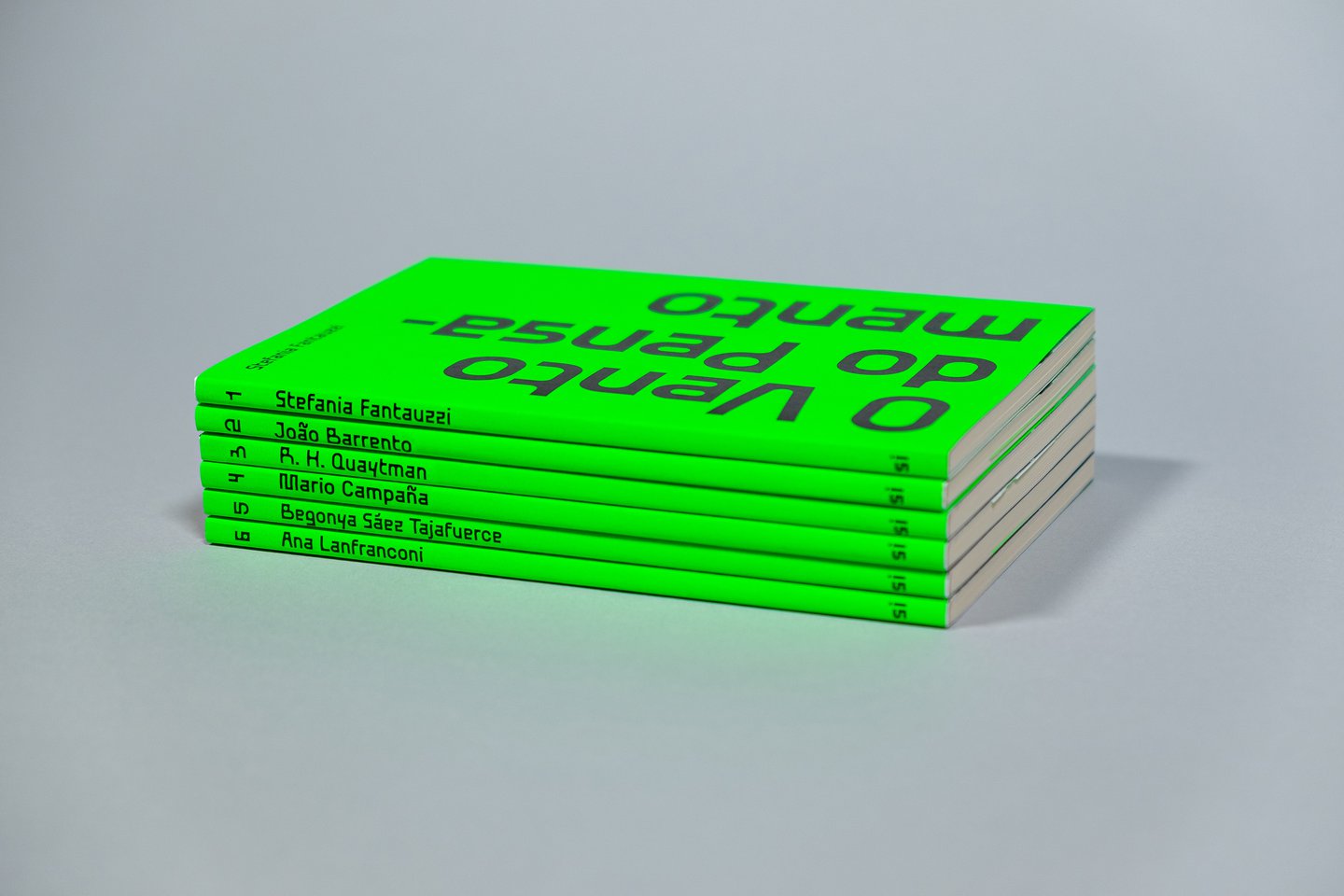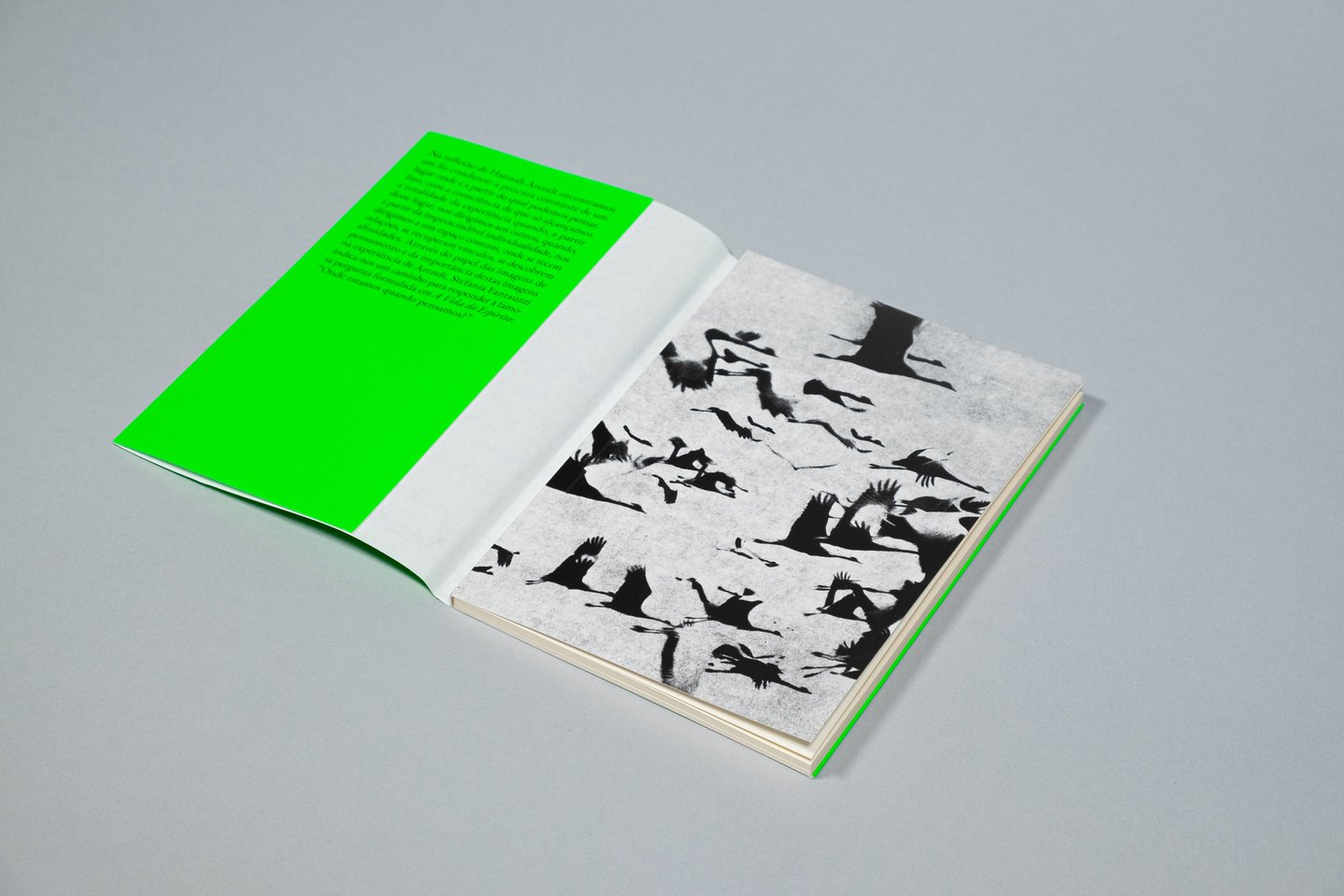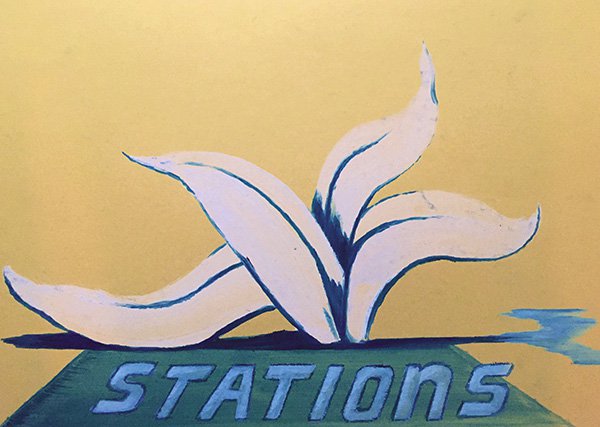Presentation of the project and the collection Thought-Images booklets, published by Sismógrafo (Porto, Portugal), with a conversation between Heinz Peter Knes and Susana Camanho on the relationship between images, fragments and thought.
The Thought-Images booklets are born from the Thought-Images conference cycle, organized by Sismógrafo, since 2020, in Porto. In a diagnosis of the present, updating the past, the themes of the books are articulated in an attempt to rescue threatened experiences in an uncertain present, to capture the emotions and experiences that vibrate in the margins. In these difficult times, we regard history, with Walter Benjamin and so many other authors, as this “constellation of dangers” that, always alert, we must avert. By rummaging through the wastes of the past, full of possibilities, and recognizing the potential of a fragment, we try to evoke the urgency of a critical thinking, capable of preventing the future from being a mere extension of the present.
Presented books:
THE WINDS OF THOUGHT, by STEFANIA FANTAUZZI
In Hannah Arendt’s thought we can find a common thread: the constant search for a place in which and from which to think. This, being aware that the totality of experience con only be achieved when from this place one goes towards others, when from one’s own indispensable individuality one goes towards a common space, in which relationships are woven, links are recovered, new affinities are discovered. Through the role of thought-images and the importance of these images in Arendt’s experience, Stefania Fantauzzi shows us a way to answer the famous question posed in The Life of the Mind: “Where are we when we think”?
THE VISAGE BEHIND THE FACE OR THE IMAGINING IMAGE, by JOÃO BARRENTO
João Barrento addresses the place and the meanings of the image in the contemporary world. Is thought still able to intervene in that world and in our ability to look at it? The image appears here in its wider, etymological sense of “phantom” or “apparition”, contrasting its surface manifestations (the “face”) with its possible multiple, creative, and acting profiles (the “visage”). Based on concepts proposed by Walter Benjamin, such as “thought-image,” “imagining thinking,” or “dialectical image,” João Barrento offers some reading hypotheses about this time and the place of art in it, in the here and now of its singularity.
THE IMAGE ESCAPES IN EVERY DIRECTION, by R.H. QUAYTMAN
While preparing an exhibition for Tel Aviv Museum of Art, R.H. Quaytman visits, in 2013, the Israel Museum in Jerusalem. Her watchful eye, her concern for what happens on the margins, leads her to a discovery: Paul Klee’s Angelus Novus (1920) is glued onto an old engraving, dark but discernible to the naked eye. R. H. Quaytman seeks to unravel the mystery: What is this engraving about? Who is portrayed in it? The question remains: Why did Klee choose this figure to be the support for the “angel of history”?
THE EXPERIENCE OF EVIL AND BAUDELAIRE'S POSTERITY, by MARIO CAMPAÑA
In Charles Baudelaire’s work, Evil appears as a constitutive notion, which harmoniously combines an ethics and an aesthetics of rupture. A review of some attempts in 18th and 19th century European thought to address the secular “problem of evil” will allow us to distinguish the morphology of Baudelaire's Evil, highlighting its revolutionary potential, which explains the wide resonance achieved by his work in the 20th century, a time when Evil, in its most atrocious forms, was part of the dominant experience of the West and its regions of influence, which stimulated new theoretical approaches to a problem that, even in its secularized form, never ceases to disturb our conscience.
DESIRING IMAGES. THE AFFECT-IMAGE, by BEGONYA SAEZ TAJAFUERCE
Based on the notion of desiring body, this book explores the possibility of thinking the desiring image in a highly technified, digitalized, and computerized world that seems to respond to the mere logic of calculation. It is in this world that we run into images and that images run into us, abandoning the place of object that we usually attribute to them, when we settle into the representational paradigm, to occupy the place of the subject. However, images become subject placing themselves in an intermediate, interstitial place, in an in-between in which they oscillate and which the images themselves make and unmake through desire. In this way, images question and deactivate the subject/object scheme and, therefore, the representational logic. This approach implies an exercise of reterritorialization of images by virtue of a new assemblage, in Deleuze’s words, which themselves carry out precisely as desiring images.
UNLIVED REMEMBRANCE AND IMAGES THAT MAKE HISTORY. A SERIES OF COLUMNS,
by ANA LANFRANCONI
How do images insist on segregating events, much to their regret? What place should be given to what in our memory corresponds to something we never experienced? How should we approach the memories of others? What is that space between the series of columns that hold history and the gaze that witnesses its collapse and reconstruction? Ana Lanfranconi starts from a series of images of columns that tell a history: that of the durability, at any cost, of the monuments of the victors. A history bearing the weight of the memory of those who, time and again, interrupt this seamless continuity of victorious narratives. Walter Benjamin’s walks as a child and Grandville’s another world outline two variations that charge this series of images with ambivalence, towards a small-scale implosion of the history of the victors and their columns.
Sismógrafo is a space in the heart of Porto (Portugal), created by the non-profit association Salto no Vazio (Jump Into the Void), where a program of visual arts exhibitions, performances, concerts, conferences, workshops, and publications is held. This year, Sismógrafo celebrates its 10th anniversary with a special program of activities, including this book collection launch at STATIONS.
Supported by the programme Shuttle da Ágora – Cultura e Desporto do Porto, E.M., S.


